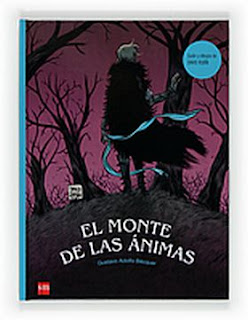SING, O GODDESS, THE ANGER OF ACHILLES...
I was recently
reminded of my beloved students of 1.º BAC, especially those enrolled in world literature.
During the first term, it came to my attention the subject had them reading a
translation of Black Ships Before Troy:
The story of the Iliad by Rosemary Sutcliff, perhaps the most compelling adaptation
of the Trojan War for young readers, volume originally accompanied by the
astonishing illustrations of Alan Lee (see below), famous also for his designs based
on Tolkien’s work. But let’s start from the beginning...
The reason why
this came to mind is because the British Museum is currently holding an
exhibition until 8 March 2020 entitled Troy:
myth and reality, covering from Helen of Troy's abduction to the deception
of the Trojan Horse and the fall of the city. The British Museum needs no
introduction: its permanent collection of around eight million works
place it among the largest museums in the whole world. Some of its most iconic
pieces are the Rosetta Stone, the Parthenon Marbles, the Sutton Hoo pieces,
artefacts from the Mausoleum of Halicarnassus (one of the Seven Wonders of the
Ancient World) and a vast number of Egyptian and Mesopotamian relics.
As for the
exhibition itself, the British Museum has a fantastic YouTube channel with
videos detailing the collection shown (check the embedded video) and providing
great insights into the history of the conflict. The Iliad is one of the foundational works of Western literature and still
holds enormous value and significance nowadays. However, as riveting as the
original story is that of the discovery by Heinrich Schliemann of the alleged
site of the original Troy... perhaps these will be more suitable for our next
post!
Hai ben pouco
acordeime do meu benquerido grupo de 1.º BAC, especialmente daqueles a cursar
Literatura Universal. Durante o primeiro trimestre, cheguei a comprobar que
tiñan como lectura obrigatoria unha tradución de Naves negras ante Troya de Rosemary Sutcliff, quizais a mellor
adaptación da guerra troiana para novos lectores, un volume que, na súa versión
orixinal, vén acompañado polas incríbeis ilustracións de Alan Lee (como a da
portada, que incluímos liñas arriba), debuxante tamén famoso polos seus deseños
baseados nos traballos de Tolkien. Mais comecemos polo principio...
O motivo polo que
todo isto veu á mente foi porque o British Museum alberga unha exposición até o
8 de marzo deste ano titulada Troia: mito
e realidade, que abrangue dende o rapto de Helena ao engano do ínclito cabalo
e a caída da cidade. O British Museum non precisa ningunha presentación. Porén,
a súa colección permanente de perto de oito millóns de pezas sitúao entre os
máis grandes do mundo. Algunhas das súas obras máis icónicas son a pedra de Rosetta, os frescos do Partenón, os restos de Sutton Hoo, fragmentos do
Mausoleo de Halicarnaso (unha das Sete Marabillas do mundo antigo) e un gran
número de reliquias exipcias e mesopotámicas.
En canto á exposición
en si, o devandito museo ten unha fantástica canle de YouTube con vídeos que
profundan na colección da que tratamos (como no vídeo do link superior, que contén
subtítulos), proporcionando moi boas perspectivas acerca da historia do
conflito. A Ilíada é unha das obras fundacionais da literatura occidental e
aínda hoxe ten un enorme valor e significado. Ademais, tan apaixonante como o
relato de Homero foi o do descubrimento, por parte de Heinrich Schliemann, da
suposta ubicación da Troia orixinal... acaso todas estas historias vallan
para un próximo post!









Yes, my friend Alexander... Homer is God!
ResponderEliminarI could not agree more, dear Felix.
ResponderEliminarPS: sorry for the late reply!